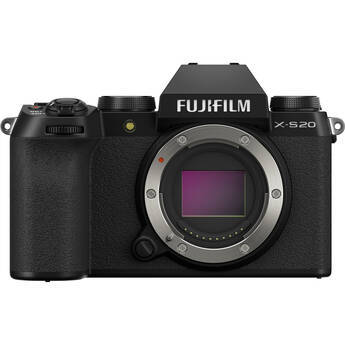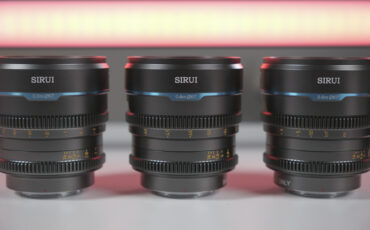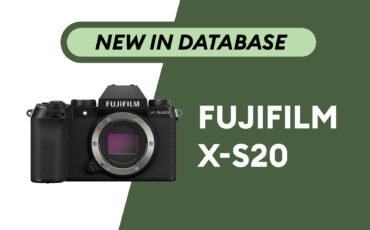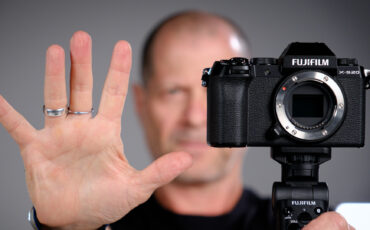FUJIFILM X-S20 Interview – Camera Body and User Interface Designers Talk
On a recent visit to Japan, I had the chance to visit FUJIFILM’s (amazing) new design center and talk to Aida-san, who designed the FUJIFILM X-S20 camera body, and Nagai-san, who was in charge of designing the camera user interface. I hope you will find this friendly, slow-paced interview useful and interesting!
It’s no secret that the X-S20 has become one of my favorite filming tools for occasional filming, as it’s a small, lightweight, capable camera with the right price tag (in my opinion). So, I gladly accepted the chance to interview Yukari Aida-san (X-S20 body designer) and Toshiaki Nagai-san (UI designer) and have a productive discussion.
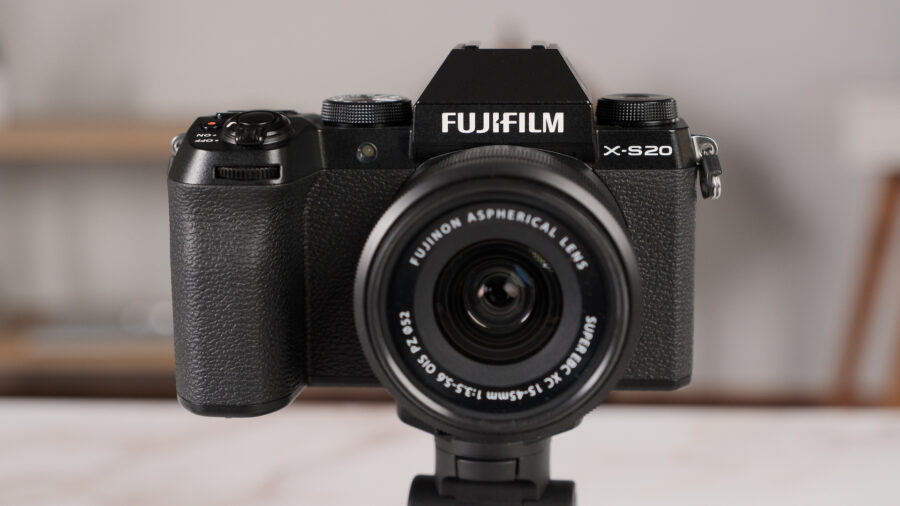
Similar to many other companies in the filmmaking industry, FUJIFILM recognizes the importance of showcasing the individuals working behind the scenes, dedicated to delivering high-quality devices. I am also pleased that language barriers are no longer an impediment to conducting these types of interviews.
For this discussion, I gave my questions in advance to Aida-san and Nagai-san so they could prepare and respond confidently.
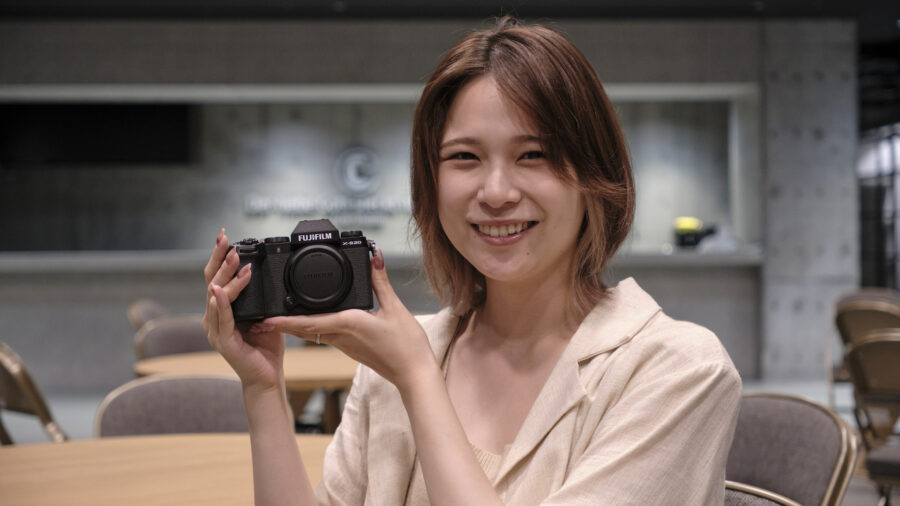
FUJIFILM X-S20 interview summary:
Yukari Aida-san
Aida-san has been with FUJIFILM for the last five years. Her father is a famous Japanese DOP, but this did not influence her direction (at least consciously). In the past, she worked on designing a few lenses like the XF 23mm, XF 33mm, XF 150-600mm, the FUJIFILM cooling fan, and the Instax wide camera/printer. (Watch our FUJIFILM XF 150-600mm factory tour by clicking here). Aida-san has a preference for designing camera bodies over lenses when given a choice between the two.
The cooling fan was joint teamwork, and according to Aida-san, the fact that users have accepted it means the FUJIFILM team chose the right design approach.
Every project is challenging in a different way because so much is involved, and the FUJIFILM X-S20 is no different. Here the requirement was to fit a bigger battery into a small camera body, so a lot of design work was required on the camera hand grip. Balancing the thickness and strength of the camera exterior was necessary.
I always wanted to learn more about designing a camera grip as size does matter. Some people have large hands, others, smaller. My question to Aida-san was: how does she tackle this kind of design issue? As expected, designing this kind of grip is very difficult, and throughout the process, numerous individuals will hold the camera to study and analyze the best possible shape.
Between “dial buttons” and “menu buttons”, Aida-san prefers dial buttons for everyday use as a hobbyist. When she works with a camera, menu buttons are the better option for her.
If she had to design a camera from scratch, she would draw her inspiration from the initial experience of taking photos with a film camera.
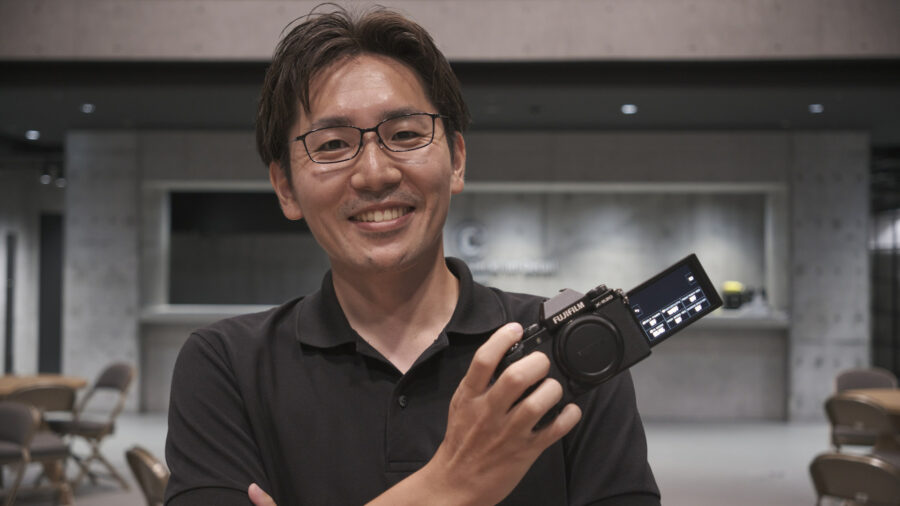
Toshiaki Nagai-san
Nagai-san has been with the company for the last seven years. Previously, he was in charge of designing UI for print services, then, the Instax application, and now, for the last three years, he has been in charge of designing user interfaces for digital cameras. He worked on the X-A7, X-T200, X-E4, and now, the X-S20. He is also in charge of additional software related to digital cameras like “Remote Rec Function“.
In this interview, Nagai-san highlights the process and workflow when it comes to decision-making and teamwork. The User Interface that is agreed upon is passed on to the implementation team at the end of the process.
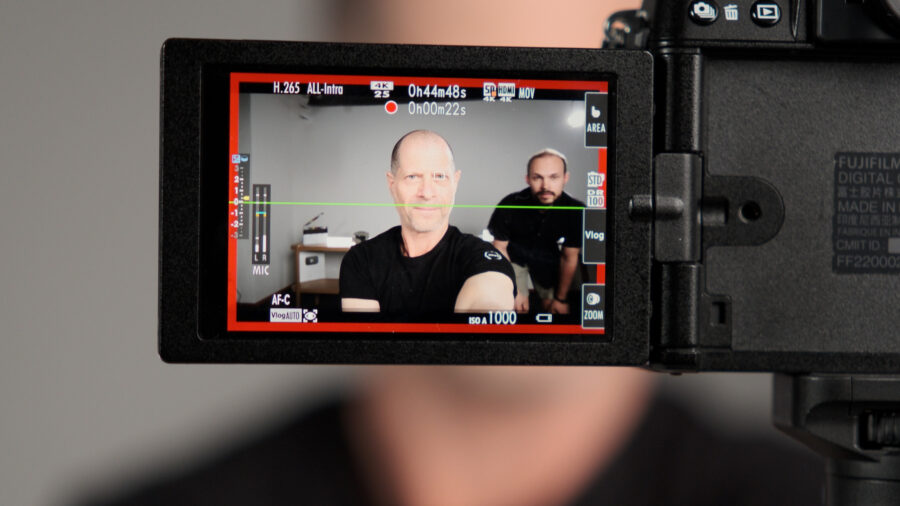
The main thing about designing UI is to make it as easy as possible for the end user. (Sounds logical, doesn’t it?) In the UI development process, a prototype is created and the implemented UI is checked. It has to function correctly to move up to the next step. Furthermore, all the camera specifications need to be implemented accurately. This step requires careful attention to avoid any mistakes.
I asked Nagai-san if implementing AI in camera menu development is realistic. For example, would it be possible to have the option of requesting the camera to set itself to a specific resolution and frame rate instead of navigating through buttons or menus? Thankfully, Nagai-san thinks that such a thing is possible (but maybe not in all 35 languages supported by FUJIFILM in-camera menus).
In any case, AI is already used in some X-series cameras, subject detection for example, so Nagai-san believes we will see much more of it in the future.
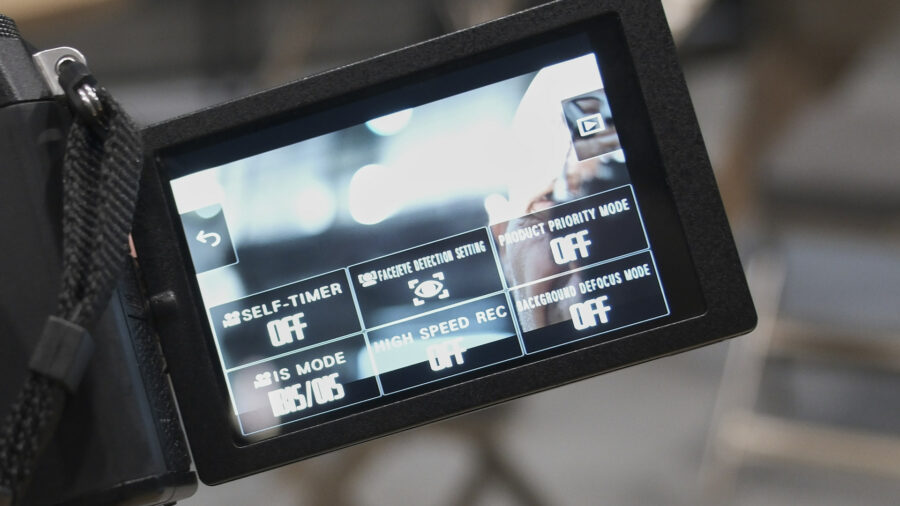
The X-S20 VLOG menu is Nagai-san’s “baby”. According to him, the menu supports efficient shooting by allowing the user to record themself and check the videos with a touch of a button, while the LCD screen is still pointed toward the operator.
I like Nagai-san’s last statement claiming that “the greater the performance of digital cameras improves, the more important Interface between the camera and user becomes”.
Cheers to that, and let’s see what the future holds for FUJIFILM cameras.
I would like to thank all of you for watching/reading the interview, and a special thanks to Aida-san and Nagai-san for taking the time to answer my questions!
Would you like to see more interviews like this? Let us know in the comment section below!
